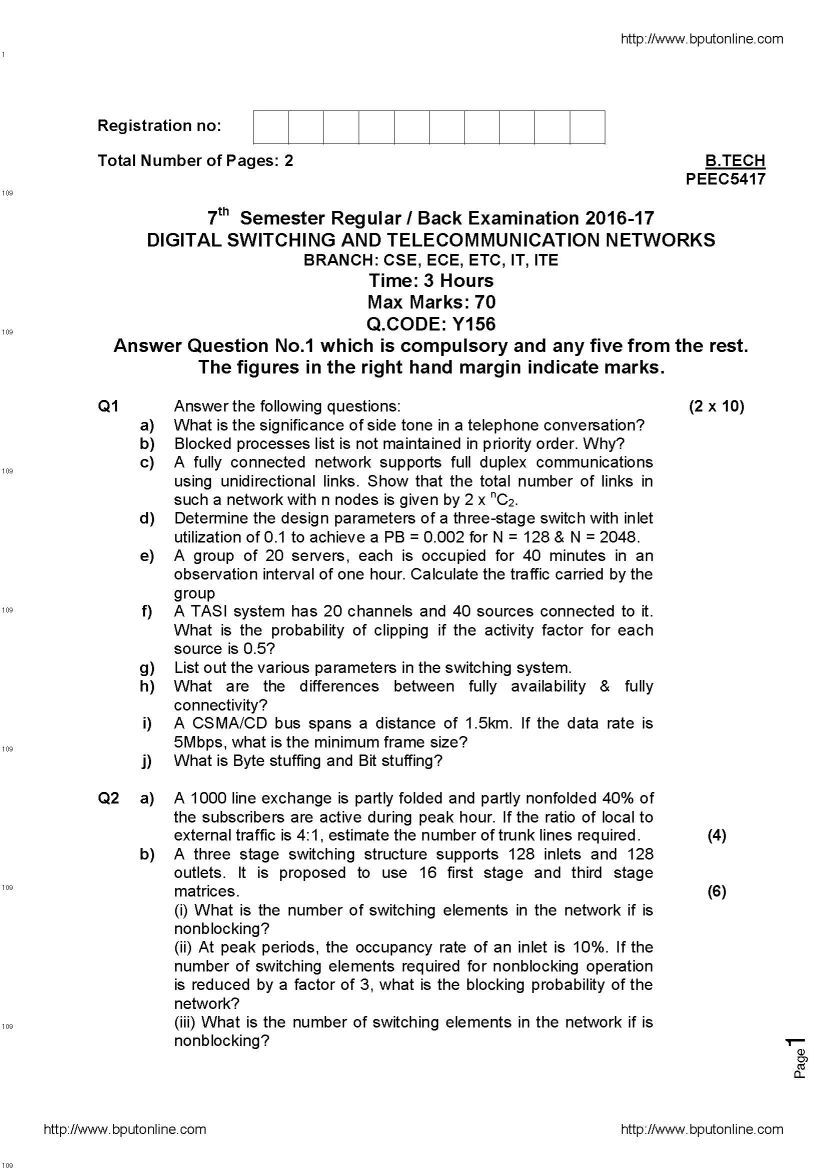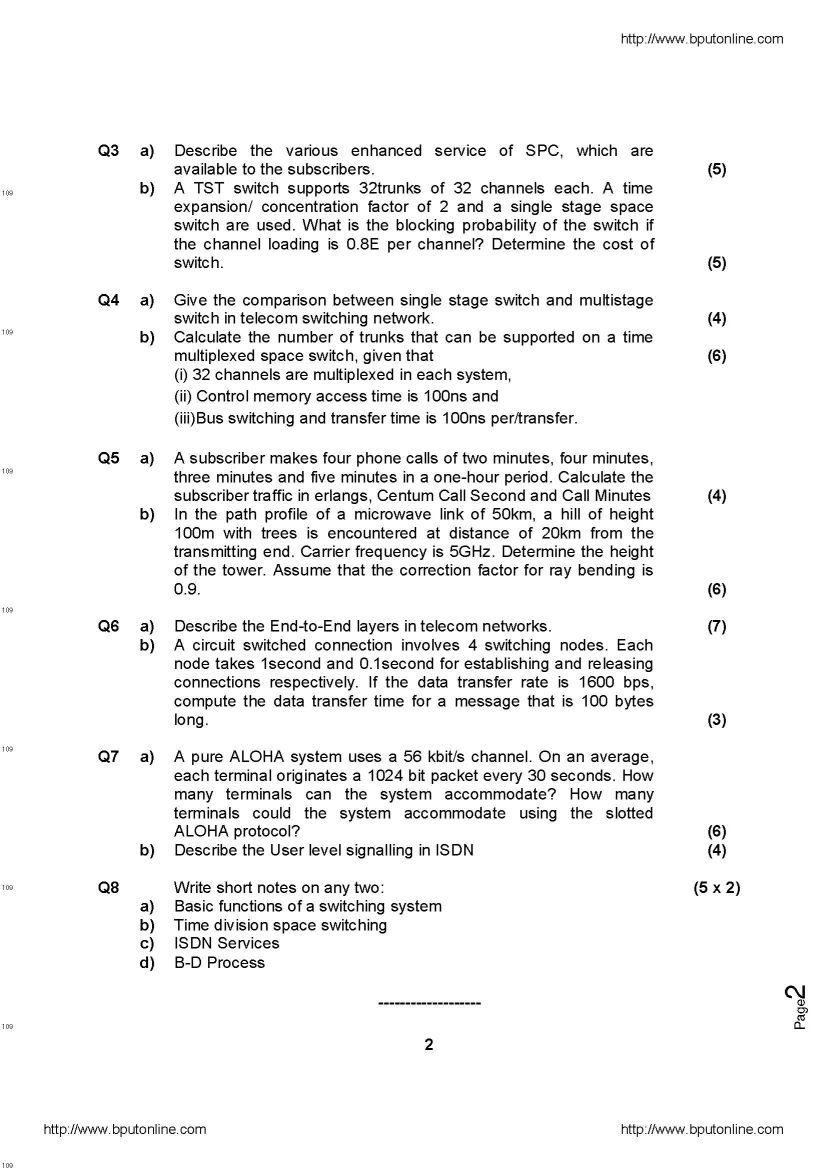|
#3
23rd May 2018, 04:25 PM
| |||
| |||
| Re: DSTN BPUT Previous Year Question
As you want to download question papers of Digital Switching and Telecommunication Networks (DSTN) Subject of B.Tech Course of BPUT University, so here I am providing question paper: BPUT University: Digital Switching and Telecommunication Networks (DSTN) Question Paper: Q1 Answer the following questions: (2 10) a) What is the significance of side tone in a telephone conversation? b) Blocked processes list is not maintained in priority order. Why? c) A fully connected network supports full duplex communications using unidirectional links. Show that the total number of links in such a network with n nodes is given by 2 x nC2. d) Determine the design parameters of a three-stage switch with inlet utilization of 0.1 to achieve a PB = 0.002 for N = 128 & N = 2048. e) A group of 20 servers, each is occupied for 40 minutes in an observation interval of one hour. Calculate the traffic carried by the group f) A TASI system has 20 channels and 40 sources connected to it. What is the probability of clipping if the activity factor for each source is 0.5? g) List out the various parameters in the switching system. h) What are the differences between fully availability & fully connectivity? i) A CSMA/CD bus spans a distance of 1.5km. If the data rate is 5Mbps, what is the minimum frame size? j) What is Byte stuffing and Bit stuffing? Q2 a) A 1000 line exchange is partly folded and partly nonfolded 40% of the subscribers are active during peak hour. If the ratio of local to external traffic is 4:1, estimate the number of trunk lines required. (4) b) A three stage switching structure supports 128 inlets and 128 outlets. It is proposed to use 16 first stage and third stage matrices. (6) (i) What is the number of switching elements in the network if is nonblocking? (ii) At peak periods, the occupancy rate of an inlet is 10%. If the number of switching elements required for nonblocking operation is reduced by a factor of 3, what is the blocking probability of the network? (iii) What is the number of switching elements in the network if is nonblocking? Q3 a) Describe the various enhanced service of SPC, which are available to the subscribers. (5) b) A TST switch supports 32trunks of 32 channels each. A time expansion/ concentration factor of 2 and a single stage space switch are used. What is the blocking probability of the switch if the channel loading is 0.8E per channel? Determine the cost of switch. Q4 a) Give the comparison between single stage switch and multistage switch in telecom switching network. (4) b) Calculate the number of trunks that can be supported on a time multiplexed space switch, given that (6) (i) 32 channels are multiplexed in each system, (ii) Control memory access time is 100ns and (iii)Bus switching and transfer time is 100ns per/transfer. Q5 a) A subscriber makes four phone calls of two minutes, four minutes, three minutes and five minutes in a one-hour period. Calculate the subscriber traffic in erlangs, Centum Call Second and Call Minutes (4) b) In the path profile of a microwave link of 50km, a hill of height 100m with trees is encountered at distance of 20km from the transmitting end. Carrier frequency is 5GHz. etermine the height of the tower. Assume that the correction factor for ray bending is 0.9. Q6 a) Describe the End-to-End layers in telecom networks. (7) b) A circuit switched connection involves 4 switching nodes. Each node takes 1second and 0.1second for establishing and releasing connections respectively. If the data transfer rate is 1600 bps, compute the data transfer time for a message that is 100 bytes long. Q7 a) A pure ALOHA system uses a 56 kbit/s channel. On an average, each terminal originates a 1024 bit packet every 30 seconds. How many terminals can the system accommodate? How any terminals could the system accommodate using the slotted ALOHA protocol? (6) b) Describe the User level signalling in ISDN Q8 Write short notes on any two: (5 2) a) Basic functions of a switching system b) Time division space switching c) ISDN Services d) B-D Process BPUT University: Digital Switching and Telecommunication Networks (DSTN) Question Paper:   |